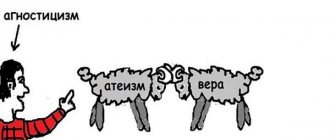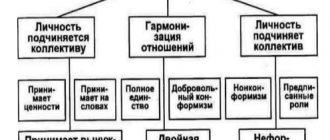Types
An informal leader, described as a communicator, easily establishes connections with other employees. Among the tools that he masters best are persuasion skills and stimulation of a positive reaction to communication. He influences the people around him in a targeted and expedient manner, choosing in each case the appropriate intonation, semantic content, and wording. It is pleasant and useful to communicate with him, which makes colleagues turn to him again and again for advice or for the purpose of friendly interaction. There are different types of unofficial leaders:
- Innovator. A creative, proactive person who constantly generates new ideas.
- Coordinator. An individual with business acumen and organizational skills.
- Crisis manager. Such an employee is practically invisible in ordinary situations, but in extreme conditions he quickly finds his bearings and makes adequate decisions.
- Revolutionary. Actively criticizes the actions of management and provokes discontent in the team.
Representatives of the first 3 types can become a reliable support for the official manager. An experienced leader from time to time delegates his powers to an informal leader and, most importantly, knows how to competently direct his thoughts to solving the necessary problems. It is important to coordinate the actions of the unofficial deputy using soft, veiled techniques so that he maintains the illusion of a personal choice of tactics.
Kinds
Informal leadership groups share common qualities but have differences. There are 5 varieties in total.
- Organizer. Such a leader deals with organizational issues. He establishes time management, draws up plans and schedules, and organizes a clear distribution of responsibilities. He may not be emotional and charismatic enough, due to which his ideas may remain unrecognized, although useful.
- The shirt guy is a person endowed with good imagination; he always has a lot of ideas in stock. He is the life of the party. He has strong energy and charm; his ideas almost always impress everyone. What sets him apart is that he can inspire the team to carry them out. The performance of such people directly depends on their mood and approval from colleagues. He communicates with both his colleagues and management on equal terms.
- A rebel - such an employee always knows at what moment and what needs to be said, and knows how to correctly express his thoughts. He often argues and proves that he is right to his boss. Such a person is a fighter for justice. He constantly defends someone’s interests and provokes riots, arouses affection among his colleagues, and if he quits due to a conflict with his boss, other employees of the company may leave after him.
- The conductor is the first person a manager turns to if he does not want to build relationships with his employees, but wants to convey information to them and get the necessary reaction. Such people are distinguished by their friendliness and won the trust of others, therefore they are good organizers of productive work. They cannot be called absolute leaders, because independent decisions are more difficult for them than carrying out instructions from their boss.
- A gray cardinal is an employee who does not claim leadership, but has influence in the team. He is attentive to detail, and this gives him the ability to manipulate people. This is a supporting character, but, being in the shadows, he successfully leads the process.
Text of the book “Sociology and Psychology of Management”
Formal and informal leadership
A leader as a manager and employee can be formal and informal.
A formal leader, for example, is appointed to manage a specific area of work or department. An informal leader (for example, an unauthorized leader of an organizational structure) is a person who, due to his abilities and personal qualities, is able to captivate and lead people. The impact of an informal leader on the course of an organization's work can often be even more significant than the impact of a formal leader who does not have the qualities necessary to successfully manage people. Formal leadership is when the degree of influence depends on the position held, status in the organization;
Informal leadership is when influence comes from recognition by other members of the organization of the leader's personal superiority. In most situations, formal and informal leadership are closely intertwined and have a direct influence on each other. The management of the organization and its existence largely depend on this.
According to the method of becoming a leader, a leader can also be formal or informal. The formal leader is appointed from above or nominated. In this case, the formal leader acquires the official status of a leader.
An informal leader becomes and receives recognition in society and an organization due to his expressed personal, psychological and other qualities. With his influence, he influences the behavior of staff and can form an opposition to the manager. The ability of a leader, regardless of formal or informal type, to influence people gives him the opportunity to use the power that he receives from followers.
An informal leader is distinguished by the fact that the follower recognizes the leader as a member of the organization when he has proven his competence and value. He, as stated above, derives his power from his followers, since they recognize him as a leader and recognize his authority. To maintain his status, he must provide employees with the opportunity to satisfy their individual needs, which cannot be achieved in other ways other than those proposed by the leader. The attitude of the staff is the fact that they satisfy the leadership need for management and provide the necessary support in solving tasks that are necessary and significant for the leader.
Formal leadership is exercised by established administrative and regulated rules of appointment by personnel and teams and implies mainly functional, i.e., effective relationships. The informal leader, in turn, arises on the basis of individual relationships among members of the organization. Formal and informal leadership complement each other and are combined in the person of an influential manager, but they can also come into conflict, then the productivity of the organization decreases.
Formal leaders are business and official individuals. Informal leaders are personal and unofficial people. The implementation of activities and tasks forms a system of relationships in the organization, which are divided into formal and informal. Formal relationships arise between organizational members when they perform specific production roles. These relationships reflect the functional connections between managers and employees, which are based on norms, standards, rights and responsibilities.
There is no clear boundary between formal and informal relations; they are closely related. A formal connection can contribute to the emergence of an informal connection, slow down or accelerate the dynamics of development, and give these relationships a certain direction and social character. An informal connection can influence a formal one, acquiring stability, and at the same time develop into a formal relationship. They can complement each other, help to concretize and promote the interests of formal connections, but at the same time they can be disharmonious and uncomfortable. Informal relationships should complement formal ones. It depends on the team leader. The managing leader is a formal leader, and, therefore, followers are informal subordinates who will have their own informal leaders. An effective way is to influence a formal leader on subordinates through an informal leader, gaining his trust.
The role of the formal leader in the organization and the fact that he is endowed with official powers or elected by other participants in organizational development put him in a position somewhat different from the positions of informal natural leaders. The desire to climb the career ladder prompts him to identify himself with larger structures of the organization rather than with the society of his wards. A formal leader may believe that emotional attachment to any work team should not be an obstacle to achieving a goal or moving up the career ladder. Identifying himself with the leadership of the organization is a source of satisfaction for his personal ambitions. If a formal leader assumes that circumstances will not allow him to rise higher, and if he himself does not particularly strive for this, such a leader strongly identifies himself with his subordinates and does everything in his power to protect and realize their interests and goals.
Formal leaders first of all predetermine by what methods they should achieve their goal. As a rule, using the method of influencing personnel, in accordance with detailed plans, they organize and direct the work of subordinates in the necessary direction, while taking a neutral position. Formal leaders build their communicative process of interaction with others on the basis of regulating rights and responsibilities, and also try not to go beyond the boundaries of permitted behavior parameters. At the same time, they see themselves and others as members of one organization, in which a certain order and discipline should prevail.
Informal leaders, on the contrary, determine what goals need to be strived for, formulating them independently, without going into unnecessary details, and showing initiative. Their followers are those people who share their views and are ready to follow them, despite the difficulties. In this case, informal leaders find themselves in the role of inspirers, as opposed to formal leaders who ensure the achievement of goals through stimulation and encouragement, reward or punishment. As a rule, informal leaders are not controlled by others, but build relationships with followers in the process of communication, on trust in them.
In an organization where the overall level of development is below average, the informal leader most often acts as an expert and mentor, an adviser on any issues or an emotional center; he can encourage, sympathize, and help. In a team with high intellectual potential and high status (i.e., an organization where rules of behavior and moral imperatives are written and structured), the leader is primarily a source of ideas, a consultant on the most complex problems. At the same time, in both situations, the informal leadership position is an integrative side of society itself, an organizer of actions, a role model with which others compare their behavior.
An informal leader expresses the interests of the staff; he is a stabilizer of the situation, a kind of controlling element responsible for ensuring that the specific actions of each of his members do not contradict the general organizational interests and do not undermine the cohesion of the group. In necessary cases, he can enter into conflict with management in this regard, provoking even in the field of production activities.
The optimal solution to a problem in a conflict situation, if there is an opportunity with an informal leader, is to compromise by offering the leader at the same time an official position, which he usually does not have, but fully deserves. Moreover, it will be much easier for an informal leader who has received official authority to manage the team, and to a certain extent he will be able to neglect the interests of the team for the sake of the interests of the official organization, to which people, trusting him, will agree. But official decisions still have to be adjusted taking into account the priorities of the staff, otherwise abuse of their trust is dangerous.
The formation of a formal and informal leader occurs unforeseenly, not according to the company’s staffing schedule. The informal head of the organization is appointed from the outside, by higher management, he is given the appropriate administrative powers, and he has the right to apply sanctions. The leader is nominated from a circle of people who are essentially equal or close to him in status and official position. At the same time, the manager can also apply sanctions against one of the partners, but these sanctions are rather informal in nature. Here you should pay attention to the following fact: no matter how much a person strives to become a leader, he will never become one (this applies to informal leadership) if others do not perceive him as a leader, and without skill and practice this is absolutely impossible. In management, that is, in relation to formal leadership, the situation is completely different. A manager is often appointed to his position regardless of how his subordinates perceive him.
There is another important difference between formal and informal leadership. It lies in the fact that the formal leader is a more social person, and the informal leader is a psychological phenomenon, although at the same time there is a lot in common. Formal and informal leadership are a means of coordination, organization of relations among members of social communities, and a means of managing them. Only formal leadership is present, as already mentioned, in the system of formal, official relations, and the informal phenomenon is present in the system of informal, unofficial relations.
Formal and informal leaders implement processes of social influence in the organization. Both types of leadership are characterized by a certain subordination of relationships. Moreover, in official terms, the leader appears quite clearly and is reinforced by administrative instructions, but in informal leadership, regulated instructions are present much less noticeably and are not outlined in any way in advance. In the process of development of an organization, structuring, informal leadership is able to transform into formal, and the formal leader becomes informal, i.e. there is no definite, clear boundary between these two phenomena of leadership; a process of flow and transformation from one state to another occurs. Today, an effective leader of an organization is a person who is both an informal leader and effectively manages his subordinates.
Formal leadership tends to the formal, i.e. objective, side of the process of the organization's activities, and leadership - to the subjective. Informal power addresses a person as an individual, while formal power addresses a person as a position. And if, with a small structured management system, the informal leader and the formal leader usually coexist in one person, then in more complex management systems these roles are usually separated. Formal leadership is provided by cumbersome norms, rules, instructions and responsibilities. Informal leadership is formed from within the group, appears spontaneously and is a kind of symbol of community. As already mentioned, an informal leader has great influence in the team; he can become both a serious problem and a reliable support for the leader.
The leader receives power from the members of the informal community. It is not characterized by stability of existence, since it depends on relationships with colleagues, other staff and management, forms of activity and communications. As a rule, informal leaders become people who are charming, sociable, have experience and skills, and are able to apply the theories of the art of management in practice.
Much more often, informal leaders influence the organization positively. Within groups, information is exchanged, a common goal is achieved, the needs of belonging and recognition are satisfied, as well as the adaptation of young employees. It is these groups that create corporate culture.
Thus, a leader, whether formal or informal, is a person who has moral, hierarchical, professional and charismatic characteristics.
Communication, attention, feedback
Communication
– one of the types of communicative activities, this is a process of interaction aimed at exchanging information, mutual knowledge, and developing relationships. Communication shapes and creates society.
Communication is the most important form of interaction between people. Communication arises in connection with the emergence of a person’s need for joint activity.
The concept of “communication” initially belongs to the main categories in psychological science.
In psychology, several functions of communication are distinguished, these are:
1) information function, which implies the transfer of any information, exchange of opinions, etc.;
2) incentive function - involves stimulating the activity of another subject in communication, pushing him to perform certain actions;
3) contact function – provides for establishing contact: transmitting and receiving a message;
4) understanding – implies perception of the meaning of the message and understanding;
5) coordination function - focused primarily on coordinating actions to organize joint work;
6) influence function – is considered as a change in the state, behavior, opinion of another subject, influences decision-making;
7) the function of establishing relationships - involves determining one’s place in the system of role, status, business, interpersonal and other relations of the community in which the individual will exist.
In modern psychology, there are 3 sides of communication:
1) communicative;
2) interactive;
3) perceptual.
The purpose of human communication is to satisfy not only biological needs, but also social, cultural, cognitive, creative, intellectual growth, moral, professional development, etc.
The essence of communication lies in the information transmitted during contacts between people; this is information about the internal state, needs, world, acquired experience, skills and abilities. Communication is varied in the structure of its content.
The meaningful form of communication is presented as a complex of material, cognitive, motivational, incentive and activity components.
In material communication, objects and products of activity are exchanged, serving as a means of satisfying human needs.
Cognitive communication defines the exchange of meaningful information, which provides people with the opportunity to learn about each other's personality traits.
Conditional communication is the mutual influence of people aimed at bringing each other to a certain physical or psychological state.
With motivational communication, skills for meeting needs are mutually transferred to each other. Motivational communication allows you to acquire certain motives and goals of activity. This stimulates human development.
Activity communication is associated with types of cognitive activity and serves as a way to transmit specialized information.
Communication is a way of achieving and satisfying needs through communication. Several types of communication can be distinguished: direct and indirect, direct and indirect.
Verbal communication is carried out with the help of human organs. A person needs it. Communication begins to take shape at birth and human development.
Communication is divided into business, personal and targeted. Business communication is present in joint activities and is aimed primarily at improving the quality and productivity of functioning, i.e. business communication is focused on activity. Personal communication is determined by a person’s psychological problems, i.e., knowledge of oneself and other people, attitude to the world around us, resolution of internal problems, etc. Targeted communication is a means of satisfying significant needs.
Attention
is a human psychological process expressed in concentration on certain objects. In this case, a person can simultaneously be distracted from other objects for a certain period of time.
Attention is manifested in specific mental processes (for example, a person looks closely, memorizes, reasons, thinks, etc.).
Attention can be voluntary or involuntary. With involuntary attention, a person’s mental processes work without conscious volitional efforts and attitudes.
Along with involuntary attention, a large role is played by the voluntary form of attention, which is associated with a consciously set goal. Voluntary attention is always intentional. External factors, such as noise, smells, light, as a result, irritate the individual, preventing him from concentrating his attention on the object of interest to him. However, in recent years, psychologists have discovered that some external stimuli do not always interfere with concentration, but, on the contrary, allow concentration. Such irritants can include quiet classical music, the noise of leaves, etc.
Mindfulness plays a very important role in a person's life. Achieving success requires a high concentration of attention. To achieve success at work, you need to develop attention and be able to focus on any object or subject, regardless of time.
Feedback
The sender of information expects the recipient to send him a signal confirming the fact, he will receive the message and explain the degree of understanding or misunderstanding of the information. This is feedback.
The sustainable nature of feedback can significantly increase the reliability and significance of information exchange.
Effective communication ensures concise, clear messages.
Behavioral patterns: passivity, aggressiveness, manipulativeness, assertiveness
Passive behavior is characteristic of a person who is characterized only by a passive reaction in any life situations. Such a person is closed.
A passive person will suffer and endure in silence. People with passive behavior ask permission for what other people consider their birthright.
A person who has a passive style is a habitual behavior style, most often lacking self-confidence and feeling awkward in almost all situations. He is haunted by constant discomfort and feelings of inferiority.
Passivity in certain situations is characteristic of that category of people whose behavior is usually uncertain and unstable, and who experience significant stress in certain life situations.
So, the active passive person usually deprives himself of the opportunity to express his feelings. After such a reaction, a person feels disadvantaged, since, giving others the opportunity to decide for themselves, he himself rarely achieves the goal.
A passive employee in an organization strictly follows job descriptions and is characterized by diligence and accuracy. This style of behavior was typical during the Soviet period, since passive behavior excludes the manifestation of initiative and independence.
An aggressive person may achieve his goal, but at the same time he can create feelings of hatred, anger and resentment.
Aggressive behavior is the opposite of passive behavior. This is especially noticeable in our time. Aggressive behavior has become very popular; it brings definite and tangible results. For some period of activity, such behavior will be constructive. An aggressive style of behavior is unstable, its constant dynamics can lead to a stressful state.
Passive and aggressive behavior often causes negative feelings towards the passive or aggressive person, ranging from feelings of sympathy to feelings of anger and contempt.
Manipulated behavior in its own way has a positive and positive impact on the development of the organization and the performance of employees. When manipulating, a person, a leader, does not directly state his goal, while he provokes and spurs another to perform the act and action he wants. The leader may appear to be a positive, good and pleasant person to talk to. By creating a certain image, a manipulative manager captivates with his example and evokes a reciprocal desire to be a good employee. If you do not reorganize your image, after a while the employees of the organization will begin to feel that they are being used and that everything they see is a farce. Currently, not a single effectively developing company can do without the use of manipulation methods and techniques.
The term “assertiveness” comes from the English. assert
- “to insist, to defend one’s rights.”
And assertiveness
is naturalness and independence from the influence of the external environment, the ability to independently regulate one’s own behavior and be responsible for it.
Assertive behavior is based on each employee understanding their rights and responsibilities and respecting the rights and responsibilities of others. This behavior assumes a confident and active position within the company and in the environment. It focuses on collaboration, effective work and positive relationships. The main property of this behavior is the individual responsibility of each team member.
Assertiveness means responsibility for one's own behavior. An assertive person does not blame another person for their behavior.
An assertive person demonstrates self-respect and respect for other people.
In this case, the main features of an assertive person are the following three qualities - honesty, openness and directness in conversation. It allows you to say what you think or feel on any issue without upsetting your communication partner.
An assertive person is an indicator of confidence and a positive attitude. Assertive behavior involves developing confidence and a positive attitude.
An assertive person knows how to listen carefully and understand. Assertiveness does not allow inattentive listening. He strives to understand the other person's point of view.
The assertive pattern helps the leader in finding solutions and finding simple ways out of difficult situations.
What to do with corporate quasi-culture
The first idea that comes in such a situation is to fire all recalcitrant violators (informal groups and informal leaders), recruit new employees and work with them. But this solution often turns out to be unprofitable:
- It will take time to recruit and train new people. If the old ones are dismissed, they will have to pay compensation for termination of the employment contract.
- There is no guarantee that new employees will be more effective than those with whom they have worked successfully for years.
- Fired experts will go to work for competitors, and there will be a risk of information leakage and loss of the client base.
There is a backup and more economical plan of action to reformat the culture in the organization.
How to identify an informal leader in an organization
To do this, you need to understand what forces are acting on the situation and how to control them. You should be aware of the phenomenon of groupthink that certain people trigger. They are the informal leaders of the group.
Shirt guy
A friendly, emotional person who is able to charge other people with positivity. Such an informal leader is excellent for influencing specific people who, for various reasons, do not want to complete the task.
With the help of charm and attractiveness, he can sow positive emotions within the team. It is almost impossible to refuse him; even the most boring and uninteresting work will sparkle with new colors in his presence. The motivation for such a leader is a feeling of equality with his superiors. It is important for him to understand that he is able to influence people.
Demonstration of qualities
The qualities of a leader are demonstrated by words, intonation, way of conducting a conversation, facial expressions and gestures, confidence and firmness of opinion.
- A confident person maintains good posture.
- Doesn't take his eyes off the other person's eyes.
- Smiles only in appropriate situations.
- Treats the interlocutor with respect.
- Dress appropriately for the position held.
Formal and informal leadership: differences
Choleric - what kind of person is this? Attention! The main difference between an informal leader and a formal leader is that this status is assigned to him by the team itself. A formal leader is a manager, a person who holds an administrative position in an enterprise. A leadership position cannot endow a person with certain qualities.
An informal person differs from an official leader in the following points:
- There is always a leader in the team. If this post becomes vacant, the vacancy is quickly filled by one or another candidate. The informal appears spontaneously; it is impossible to control this process.
- Formal leadership is a stable structure. Informal leadership is a temporary phenomenon.
- The boss always has sanctions in his hands. The leader has no sanctions that he can apply to colleagues if they refuse to do as he says.
- An unofficial leader maintains his position thanks to his strong qualities. The manager heads the enterprise in accordance with his job description.
- It is easier for a manager to maintain a leading position than for an informal worker, because the production hierarchy is recognized by all employees.
- The manager regulates the production relationships of employees, and the informal influences the interpersonal relationships in the team.
- When making management decisions, the director takes into account many factors, weighs and analyzes, and sometimes calls his deputies to a meeting. Administrative decisions take into account the interests of not only a particular enterprise, but also the interests of other companies. The leader makes decisions individually and directly. His decisions are based on the interests of the members of a particular team.
Reasons for appearance
Informal leadership is notable for the fact that sometimes the team, without realizing it, is under the influence of its colleague. In case of some problem they turn to him more often than to a formal one. And he cleverly proposes his ideas, stimulating others to implement them thanks to his charisma.
The emergence of an informal leader in a team is not uncommon and occurs in most organizations.
This is due to the fact that, regardless of the type of activity, personal relationships are always valued in any team. And no matter how good the boss is, employees will always find an idol to whom they will listen with greater joy. Such people are loved by the team, but not always by the current leader.
Often such cases arise in a company with an authoritarian management regime. In the case when the manager does not try to improve relations with his subordinates, everything is compensated by the influence of the informal leader. Such people are distinguished by an active lifestyle, openness and charm. They can easily resolve conflicts and reduce the intensity of passions.
There is another extreme at which they appear. A boss with a soft character provokes the emergence of a tougher employee who is capable of making responsible decisions.
Role in work processes
Many managers do not pay attention to the leaders on their staff and do not think it is right to “collaborate” with them, but this decision is fundamentally wrong. Such a person, if you do not control him, can create a lot of problems in the future:
- people will stop working;
- put forward demands for changes in working conditions;
- they will want a dramatic salary increase, etc.
If you notice an informal leader in your team, you need to find a common language with him. His relationship with management can lead to high achievements. If the informal person is not aware of the plans of the enterprise and makes the right decision, as it seems to him, without advice, this can be fatal for the company.
Charismatic leader
Charisma is, first of all, when a person is himself. He is not afraid of losing face, he does not pretend to be anyone. The power of a charismatic leader is primarily based on his personal qualities. Example Zhirinovsky.
A charismatic leader is not afraid of condemnation, mistakes, is not afraid to take responsibility, and is not afraid to speak in public. An example is Hitler, who with his speeches put the crowd into a trance.
They are primarily energetic and independent, with high self-esteem. Most of our citizens have low self-esteem and lack self-confidence. Therefore, they instinctively obey a charismatic leader, because they are afraid of responsibility or simply afraid that something might not work out.
And a charismatic leader, if something happens, will not hesitate to shift responsibility to his followers. And he will not suffer from feelings of guilt. How to become like this, additional information. materials.
Charisma is translated as a divine gift and every person has it, it’s just blocked by our upbringing. Remove mental blocks and you will see your charisma.
Fight or interact
Informal leadership is a tool that a manager can use to improve the effectiveness of labor management. If the unofficial leader adheres to a constructive style of influence, generates ideas, improves the technological process, organizes work, cooperation with him will strengthen the position of the official manager. He can become a kind of cardinal under the king-leader, if he still likes to actively participate in the life of the enterprise.
It is more difficult to establish mutual understanding with an unofficial leader who focuses on a destructive style of influencing the masses. In this case, it is advisable to make him an offer that he cannot resist; he will prefer to remain in a leading position and cooperate with the manager. You can interest such an employee with a promotion, financial incentives, or help in eliminating social and everyday problems.
First, it is worth finding out the motives of an initiative employee who can seek power in order to feel like a person of status. Another likely goal is self-realization. An individual develops in a direction that appeals to him and expects to succeed in his chosen field. There are real examples when both leaders work together very, very effectively.
The way to confront a revolutionary leader is to give him the opportunity to personally address the issues that are causing employee dissatisfaction. Typically, such people only speak out about the shortcomings of working conditions or the organization of the production process, without offering ways out of the situation. When you need to take the reins of power into your own hands and achieve real results, rebels quickly calm down and back down.
An informal leader is an influential employee of the enterprise who directs the efforts of the majority of group members in accordance with his own goals. Cooperation between the head of an enterprise and an unofficial leader offers broad prospects for improving, optimizing the company’s economic activities and increasing profits.
Signs
The presence of a leadership system in a group is evidenced by the recognition by the majority of its members of the authority of a person.
This person makes decisions, organizes activities, and bears responsibility. The main characteristics of a leader:
- Foresight . He knows how to predict the development of events and convince others of the correctness of the chosen strategy.
- Thoughtfulness . He always approaches solving any problems calmly and judiciously, without fuss or hasty conclusions.
- Ability to understand people. He understands the essence of man, his inherent weaknesses and strengths. This helps to objectively assess everyone’s abilities and use these abilities as competently as possible in the common cause.
- Activity . This position is very difficult emotionally, since responsibility is always a source of stress. The leader must be physically and psychologically resilient, only in this case the burden placed on him will be feasible.
- Determination .
Failures do not become a reason to abandon your ideas, but are perceived as useful lessons on the way to achieving your goals. Facing difficulties does not confuse you, but only stimulates you to look for ways to overcome them. - Subsequence . People feel comfortable only when the reality around them is predictable and stable. It is the ability to build a correspondence between the chosen strategies, the techniques used and the achievement of expected results that is the key to the trust of group members. The inconsistency and variability of the leader always causes the destruction of any community.
- Justice . A team or social group will trust someone who treats everyone around him equally, without exception. The presence of favorites and close associates always leads to a deterioration in the psychological climate in any group.
- Cool mind. Decisions often have to be made on the spur of the moment to save the overall idea, but they can infringe on the rights of individuals. Often you need to sacrifice less in order not to lose more. Excessive emotionality and softness do not benefit a leader, who must always be guided by rational considerations.
Read about the causes of conflicts in organizations and ways to prevent them here.
Remember that things could turn out differently
Leadership opportunities are influenced by many factors. Therefore, motivation alone to obtain status may not be enough. Typically, in an established team, leadership roles have already been assigned. Change is possible, but it will take time and persistence.
It is possible that after working in a company, you will realize that you do not see yourself as a manager or informal leader here. But wherever you decide to take your career next, you'll need the ability to connect with a team and the ability to benefit from being a newbie.
Advice for an aspiring leader
- Determine the destination (where the bus is going);
- Determine what qualities are needed to achieve this goal. What you should become. Determine your role in achieving the goal. (Learn to become a driver, or become a manager and hire a professional driver).
- Determine what prevents you from achieving your goal. Remove obstacles;
- First, learn to subordinate yourself to your goal, to do this, determine your ideal future (where to go), make a plan to achieve it (bus route).
- Break the plan into subplans and small tasks and tie it to a timeline. The output should be a schedule of actions towards an ideal future.
- Track the obstacles in your path, and look for the causes of these problems in yourself. Because you will not be able to influence external circumstances, you will be able to influence your qualities.
Tags
informal leader informal leaders informal leadership Informal leader Definition of an informal leader and informal leaders manifestations of informal leadership The role of an informal leader becomes an informal leader. Informal leader Definition of an informal leader Informal leader In each team there are members of the team. The team itself. In the team there is in the team. Informal leadership Informal leadership.
authoritypsychologypersonalityopiniongreatselfnecessarynews











